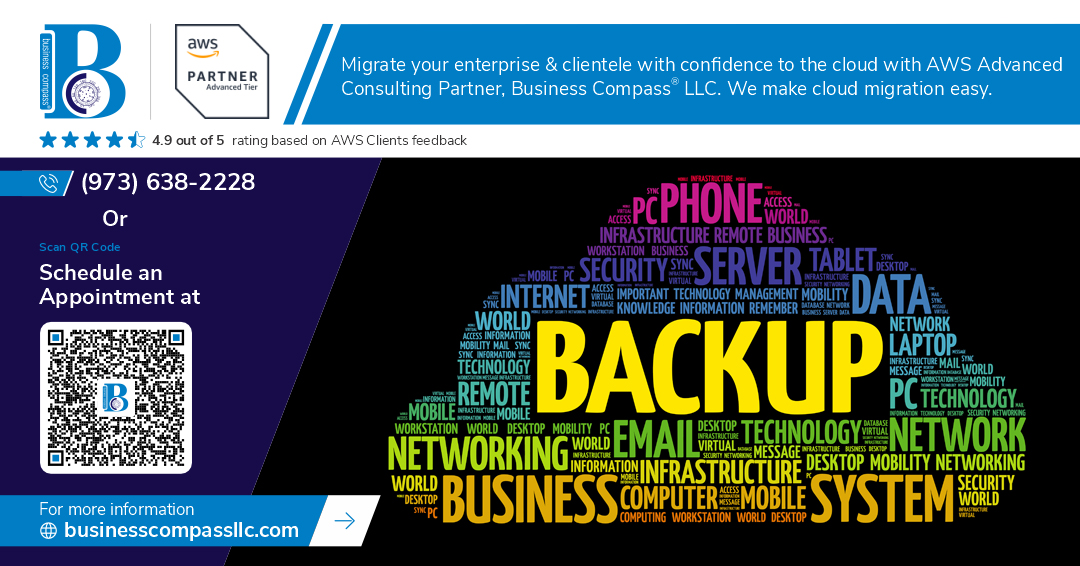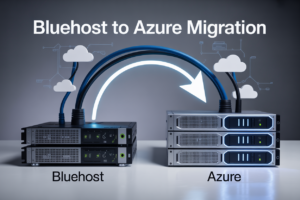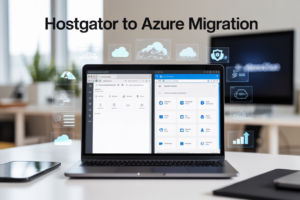Managing backups for your cloud infrastructure doesn’t have to be a daily headache. AWS backup automation transforms how organizations protect their data by removing manual processes and reducing human error risks.
This guide is designed for cloud engineers, DevOps teams, and IT administrators who want to streamline their data protection workflows without sacrificing reliability. You’ll discover how automated backup solutions can save time while keeping your critical workloads secure.
We’ll walk you through the core AWS backup service features and show you exactly how to set up backup policies AWS that match your business needs. You’ll also learn proven backup monitoring AWS techniques that help you spot issues before they become problems, plus advanced cloud backup strategies that scale with your growing infrastructure.
By the end, you’ll have a clear roadmap for implementing cloud data protection that works around the clock, so you can focus on building great products instead of worrying about data loss.
Understanding AWS Backup Service Fundamentals
Core Components and Architecture Overview
AWS backup automation centers on a centralized service that orchestrates data protection across your cloud infrastructure. The architecture includes backup vaults for secure storage, backup plans that define scheduling and retention policies, and recovery points that enable precise restoration. Cross-region replication capabilities ensure geographic redundancy, while the service automatically handles backup job execution, resource tagging, and lifecycle management without manual intervention.
Integration Capabilities with AWS Services
Native integration spans across Amazon EC2, EBS, RDS, DynamoDB, EFS, and FSx, creating seamless automated backup solutions for diverse workload types. The service connects with AWS Organizations for centralized governance, CloudFormation for infrastructure-as-code deployments, and CloudTrail for comprehensive audit logging. API-driven automation enables custom workflows, while AWS Systems Manager integration streamlines backup operations across hybrid environments and on-premises resources through AWS Storage Gateway.
Cost-Effective Storage Tier Options
Intelligent tiering automatically transitions backup data between storage classes based on access patterns and retention requirements. Cold storage options reduce costs by up to 50% for long-term retention scenarios, while warm storage maintains faster recovery times for frequently accessed backups. The service optimizes storage costs through deduplication, compression, and incremental backup techniques. Lifecycle policies automatically delete expired backups, preventing unnecessary storage charges while maintaining compliance requirements.
Security and Compliance Features
Encryption at rest and in transit protects backup data using AWS KMS keys, with customer-managed key options for enhanced security control. Cross-account backup capabilities enable centralized data protection strategies while maintaining access boundaries. AWS backup service supports compliance frameworks including HIPAA, SOC, and PCI DSS through comprehensive audit trails, access logging, and immutable backup storage options that prevent unauthorized modifications or deletions.
Key Benefits of Automated Backup Solutions
Reduced Manual Intervention and Human Error
AWS backup automation eliminates the tedious task of manually scheduling and executing backups across your cloud infrastructure. When you rely on manual processes, someone invariably forgets to run a backup during critical periods or misconfigures settings under pressure. Automated backup solutions remove these risks by executing predefined tasks without human intervention. Your backup operations run consistently whether it’s 3 AM on a weekend or during a busy product launch. The system doesn’t get tired, doesn’t take sick days, and doesn’t accidentally select the wrong backup target. This reliability becomes especially valuable when managing multiple AWS environments or complex workloads that require different backup frequencies and retention policies.
Consistent Backup Scheduling Across Workloads
Managing backup schedules manually across different AWS services like EC2, RDS, and EFS quickly becomes overwhelming as your infrastructure grows. AWS backup service provides centralized scheduling that ensures every workload receives protection according to its specific requirements. Database instances can run daily backups while file systems might need hourly snapshots during peak business periods. The automation maintains these varied schedules without conflicts or missed backup windows. Cross-region replication happens automatically based on your disaster recovery requirements. This consistency extends to compliance requirements where certain data must be backed up at specific intervals and retained for regulatory periods. Your backup policies AWS implementation ensures no workload falls through the cracks.
Enhanced Disaster Recovery Capabilities
Automated backup solutions transform disaster recovery from a reactive scramble into a predictable, tested process. When disasters strike, you need backups that are recent, verified, and immediately accessible. Cloud data protection through automation ensures your recovery point objectives (RPO) and recovery time objectives (RTO) align with business requirements. The system automatically tests backup integrity and maintains multiple recovery points across different time intervals. Cross-region backup replication happens seamlessly, ensuring your data remains available even if an entire AWS region experiences issues. Automated backup monitoring provides real-time visibility into backup success rates and identifies potential issues before they impact recovery capabilities. This proactive approach to data protection automation significantly reduces downtime and data loss during critical incidents.
Setting Up AWS Backup for Different Workload Types
EC2 instances and EBS volumes configuration
AWS backup automation for EC2 instances starts with selecting resources through tags, resource IDs, or resource groups. Create backup plans that specify frequency, retention periods, and lifecycle policies. EBS volumes automatically receive application-consistent snapshots when backup jobs run. Configure cross-region copying for disaster recovery and set up backup vaults with encryption keys for enhanced security.
RDS database backup automation
RDS backup automation leverages point-in-time recovery capabilities alongside automated backup solutions. Configure backup plans to capture both automated daily backups and on-demand snapshots. Set retention periods based on compliance requirements and enable cross-region replication for critical databases. AWS backup service integrates seamlessly with RDS encryption, maintaining security throughout the backup process while supporting multiple database engines.
EFS and FSx file system protection
File system backup strategies require different approaches for EFS and FSx workloads. EFS backup automation creates incremental backups that capture only changed data, reducing storage costs and backup windows. FSx backup policies support both automatic daily backups and user-initiated backups. Configure backup schedules during low-activity periods and establish retention policies that balance storage costs with recovery requirements for your cloud workload backup needs.
DynamoDB table backup strategies
DynamoDB backup automation offers continuous backups with point-in-time recovery and on-demand backup options. Enable continuous backups for tables requiring granular recovery capabilities, allowing restoration to any point within the last 35 days. Schedule on-demand backups for specific compliance requirements or before major application changes. Cross-region backup replication ensures data protection automation across multiple AWS regions for critical NoSQL workloads.
Creating Effective Backup Policies and Plans
Defining retention periods and lifecycle rules
Setting smart retention periods saves money while meeting compliance requirements. Short-term backups handle daily operations, while long-term archives protect against major disasters. AWS backup policies let you automatically transition data from expensive storage to cheaper options like Glacier after 30 days. Configure different retention schedules for production versus development environments – production might need 7 years while dev environments only need 90 days. Most organizations start with a 3-2-1 strategy: three copies of data, two different storage types, one offsite location.
Cross-region backup replication setup
Cross-region replication protects against regional failures and natural disasters affecting entire AWS availability zones. AWS backup automation makes this simple by copying your backups to a secondary region automatically. Choose regions that meet your compliance needs – some industries require data to stay within specific geographic boundaries. The backup service handles encryption and network transfer, so you don’t need to build complex replication scripts. Monitor cross-region costs carefully since data transfer between regions adds to your backup expenses.
Resource tagging for organized backup management
Tags transform chaotic backup operations into organized, automated systems that scale with your business. Create consistent tagging strategies using keys like Environment, Department, and CriticalityLevel to group resources logically. AWS backup policies use these tags to automatically include or exclude resources from backup plans. Tag-based backup management lets teams control their own backup schedules without IT intervention. Smart tagging also helps with cost allocation – you can track exactly how much each department spends on cloud data protection and automated backup solutions.
Monitoring and Managing Your Backup Operations
CloudWatch Metrics and Alerting Configuration
AWS Backup integrates seamlessly with CloudWatch to provide comprehensive monitoring capabilities for your backup operations. Set up custom CloudWatch dashboards to track key metrics like backup success rates, job duration, and storage consumption across all your protected resources. Configure SNS notifications to alert your team immediately when backup jobs fail or when storage costs exceed predefined thresholds. Create automated responses using CloudWatch Events to trigger remediation workflows when specific backup conditions are met.
Backup Job Status Tracking and Reporting
The AWS Backup console provides detailed visibility into all backup activities through its centralized job monitoring interface. Track backup job progress in real-time, review historical performance data, and generate compliance reports for audit purposes. Use the AWS Backup API to build custom reporting solutions that integrate with your existing monitoring tools. Set up automated weekly or monthly backup summary reports that highlight success rates, failed jobs, and recovery point objectives across different workloads and business units.
Cost Optimization Through Backup Analytics
Smart cost management starts with analyzing your backup storage patterns and lifecycle policies. AWS Backup provides detailed cost breakdowns by resource type, backup vault, and storage class to identify optimization opportunities. Implement intelligent tiering strategies that automatically move older backups to cheaper storage classes like Glacier or Deep Archive. Use AWS Cost Explorer to track backup spending trends and identify resources with excessive backup frequency or retention periods that can be adjusted to reduce costs.
Troubleshooting Common Backup Failures
Most backup failures stem from insufficient IAM permissions, resource unavailability, or network connectivity issues. Check CloudTrail logs to identify permission-related errors and verify that your backup service roles have the necessary access to target resources. Monitor backup windows to ensure jobs complete before maintenance windows or resource scaling events. When dealing with database backups, verify that transactions are properly committed and that backup-friendly maintenance modes are configured to prevent consistency issues during snapshot creation.
Advanced Automation Strategies and Best Practices
Lambda-based custom backup workflows
AWS Lambda functions transform backup automation by creating custom workflows that respond to specific triggers and business requirements. You can build serverless functions that automatically initiate backups when new EC2 instances launch, schedule complex multi-resource backup sequences, or trigger restore operations based on monitoring alerts. Lambda integrations with CloudWatch Events enable event-driven backup workflows that adapt to your infrastructure changes in real-time. These custom scripts can validate backup completion, send notifications to teams, and even perform automated testing of backup integrity. By combining Lambda with AWS Backup APIs, you create intelligent backup systems that go beyond standard scheduling to deliver truly responsive data protection automation.
Cross-account backup sharing and permissions
Cross-account backup strategies provide enterprise-level data protection through centralized management and shared resource access. AWS Backup vault sharing allows you to create backup copies in separate AWS accounts, protecting against account-level security incidents or accidental deletions. Resource-based policies and cross-account IAM roles enable secure backup access while maintaining strict permission boundaries. You can establish backup vaults in security-focused accounts while allowing production accounts to store and access their backups. This approach supports compliance requirements for data segregation and provides disaster recovery capabilities across organizational boundaries. Cross-account backup sharing also enables cost optimization by consolidating backup storage in accounts with better pricing structures or reserved capacity.
Compliance reporting and audit trail maintenance
Robust compliance reporting transforms AWS backup operations into auditable processes that meet regulatory requirements and internal governance standards. AWS CloudTrail automatically captures all backup API calls, creating comprehensive audit trails that track who initiated backups, when they occurred, and what resources were protected. You can configure CloudWatch dashboards to display backup completion rates, recovery point objectives, and compliance metrics in real-time. AWS Config rules validate backup configurations against compliance policies, automatically flagging deviations from established standards. Custom reports can be generated using AWS Cost and Usage Reports combined with backup metadata to demonstrate data protection investments and ROI. These audit capabilities support SOC 2, HIPAA, and other compliance frameworks by providing detailed documentation of backup activities and recovery capabilities.
AWS backup automation transforms how you protect your cloud data, making it simple to safeguard everything from databases to entire EC2 instances without the headache of manual processes. By setting up automated backup policies, you can sleep better knowing your critical workloads are protected around the clock, while centralized monitoring gives you complete visibility into your backup operations.
The real power comes from combining AWS Backup’s built-in features with smart automation strategies that fit your specific needs. Start by identifying your most critical workloads and create backup plans that match your recovery goals. Don’t wait for a disaster to test your setup – regularly review your backup policies and run recovery tests to make sure everything works when you need it most.


















